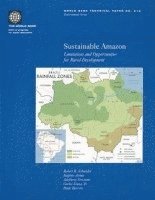339:-
Tillfälligt slut online – klicka på "Bevaka" för att få ett mejl så fort varan går att köpa igen.
Forests play a vital role in maintaining Nepal's impressive biodiversity, which has global significance: With only 0.1 percent of the world's total area, Nepal contains 2 percent of the planet's flowering plants, 8 percent of its birds, and 4 percent of its mammals. As Nepal develops its forest resources, it needs to minimize the biotic pressures affecting the structure and dynamics of forest plant communities and wildlife populations and thereby reverse the current destructive pressures on the country's biodiversity. The study aims to provide a better understanding of the ways in which forest resources are used in Nepal. Its focus is to examine systematically the costs and benefits of present and possible future sustainable and biodiversity-friendly management practices from household, national, and global perspectives. The authors define the analytical framework and the costs of financial and economic alternatives. They also present the economic, social, institutional and legal issues, and recommend strategies for change. The report should be of use to national and donor agencies concerned with the management of natural resources and conservation of biodiversity in Nepal, providing a framework for possible future donor support to the sector. It highlights issues that are of importance in the formulation and implementation of natural resource management programs by government and non-government agencies.
- Format: Pocket/Paperback
- ISBN: 9780821344804
- Språk: Engelska
- Antal sidor: 50
- Utgivningsdatum: 1999-08-01
- Förlag: World Bank Publications


